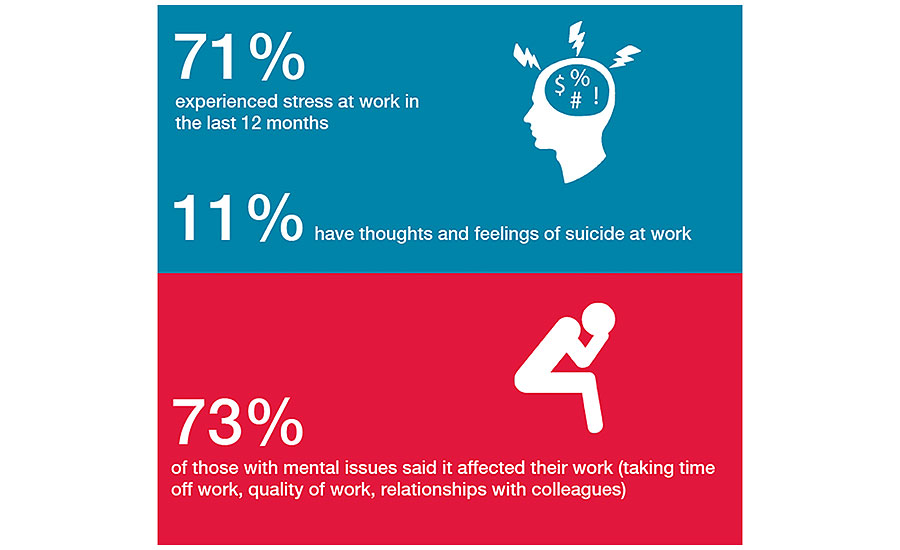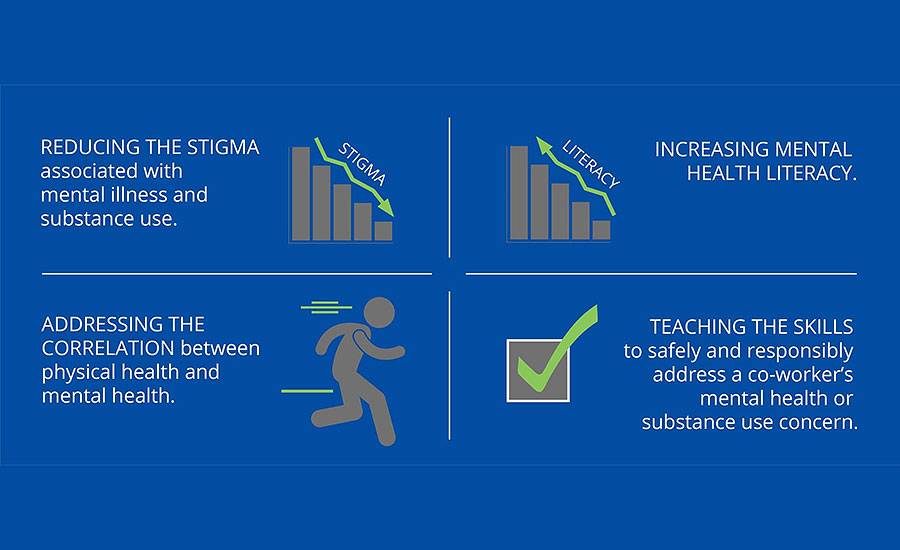Digital Exclusive
Mental Health Focus: 5 Effective Steps to take in the workplace








Managers say their employees’ personal lives shouldn’t be their concern. However, this isn’t the best approach because workplace mental health is an important matter. It’s a common mistake to forget the human nature of employees. As an employer, it’s important to be compassionate with those who work for you.
Emotions may overwhelm your employees and external factors may change their mood. As a result, productivity rates decline, causing your business to suffer, too. Work may be an effective mechanism to distract the mind, but it may also cause declining mental health.
Today, managers are more aware of workplace mental health. Through advocacy campaigns, there’s been a shift in employee treatment. After all, a happy and healthy employee is productive.
A healthy work environment
1) Establish workplace mental health programs
Without transparent communication channels, employees’ mental health is at risk. When their goals are unclear, it leads to frustration. Additionally, poor management makes it difficult for them to open up about personal issues. As a result, they feel alone in their thoughts without anyone to look to for help.
It’s vital to start open discussions and office workshops on workplace mental health. From these activities, managers and employers can understand their workers’ challenges. This may include stress, depression or anxiety.
Discussions among employees encourage them to open up about their mental health battles. A neutral third party may join and note their concerns, and then relay them to the managers for awareness.
Conduct productive half-day workshops a few times in a year. This assists in achieving the business’ long-term goals for mental health awareness.
Mental health professionals can advise managers on mental illnesses and the best approaches. The best response may be through changing the workplace environment and culture. Honest communication dispels myths and misconceptions about mental health among co-workers. Caring relationships between colleagues will develop and lead to encouraging them to get professional help. As a result, the workplace becomes a mentally safe environment.
2) Encourage mindfulness breaks
With the workload that many workers have, some find it difficult to take a break. They would rather power through and get every task done before the end of the workday.
After close examination, employers may realize this isn’t an effective operational method. Instead, it piles stress on employees and affects workplace mental health.
Mental health experts confirm that taking short breaks is essential in regulating stress. The human body can only handle short bursts of stress, so stretching its limits can be harmful. It’s for this reason that employers often assign break times for their employees.
During breaks, encourage your employees to switch off their computers for a few minutes. Assign a space for relaxing, such as a break room, so they can have a snack, meditate or listen to music. This relaxes the mind and gives them a chance to relax during a tough workday.
Include flexible working hours to make managing tasks easier. Relieving the burden of the workload is necessary for keeping stress in check.
3) Have an open-door policy
Frustration builds up where there is little participation in the decision-making processes. This is why most managers emphasize open-door policies to foster communication.
Open-door policies involve office managers leaving their doors open to encourage interaction. This breaks the imaginary barriers between workers and their superiors. Thus, it encourages transparency and openness about workplace mental health.
Honest communication about both personal and professional matters gives managers a clear understanding of the work environment. This action contributes to the production of mental health day calendars, which is a schedule of mental health days each employee can take off to heal or attend counseling.
How you treat your employees should speak to your company’s core values. Appreciate your employees by showing support and concern. In turn, this simple act increases their chances of staying loyal to the company.
Also, ensure you check in with them and take note of their mental health statuses.
4) Conduct mental health safety training workshops
Suffering from mental health may cause safety concerns for an employee’s well-being. This is why all staff members need to receive appropriate training.
Consider mental health training alongside traditional first aid training. Most companies know the benefits of an established set of first aid protocols. For example, having clearly marked and accessible first aid kits is important. Extend your first aid discussions to include mental health for greater workplace safety.
This preparation helps your employees identify mental health triggers. After these sessions, workers gain special skills to assist in times of distress.
The key is to observe behavior patterns to understand when something is off. From this, your employees are at a lower risk of causing harm when they know everyone around them cares for them.
Consider the phrases below to assess mental health patterns.
- Are you okay?
- How do you feel today?
- How can I be of help?
- I’m here for you.
- I understand what you’re going through.
These expressions work as opening statements to honest conversations about an employee’s current health status. They show understanding, compassion, and a willingness to assist. At the end of the day, the most important action you can take is to offer support.
5) Promote healthy work-life balance
Life is all about finding the right balance, especially with your career and social life. Life isn’t all about work. Likewise, without a healthy social life, employees may feel lonely and find it hard to open up.
As the old saying goes, ‘’All work and no play makes Jack a dull boy.’’ This is true.
How can your workplace environment foster the creation of a healthy life? That’s simple! Bring the fun to your office.
As the first consideration, cultivate after-work office activities now and then. Game-nights, picnics, and quiz nights are activities in which your employees can engage. You may also select activities that invest in your employees’ hobbies.
Consider encouraging your workers to spend time with their family members. Give them enough vacation days in a year to unwind and forget about work for some time. They will come back feeling relieved and motivated to work.
Through this, managers can strengthen work relationships. The positive energy from extra-curricular activities transmits to the workspace. Keeping workplace mental health in check is always easier when there is positivity.
Take each day as it comes
Rome wasn’t built in a day. Progress on workplace mental health is a daily activity. The various efforts put in help to create a mentally healthy environment.
Workplace mental health depends on all the people in an office. Each employee can contribute in the following ways:
- Be open-minded and considerate about their colleagues’ feelings.
- Take part in office stress-management activities.
- Focus on building healthy personal relationships.
- Adopt healthy ways to relieve tension, such as meditation or yoga.
- Take time to live in the present, away from phones and computers.
Collective efforts from all staff lead to success in promoting workplace mental health.
Looking for a reprint of this article?
From high-res PDFs to custom plaques, order your copy today!










